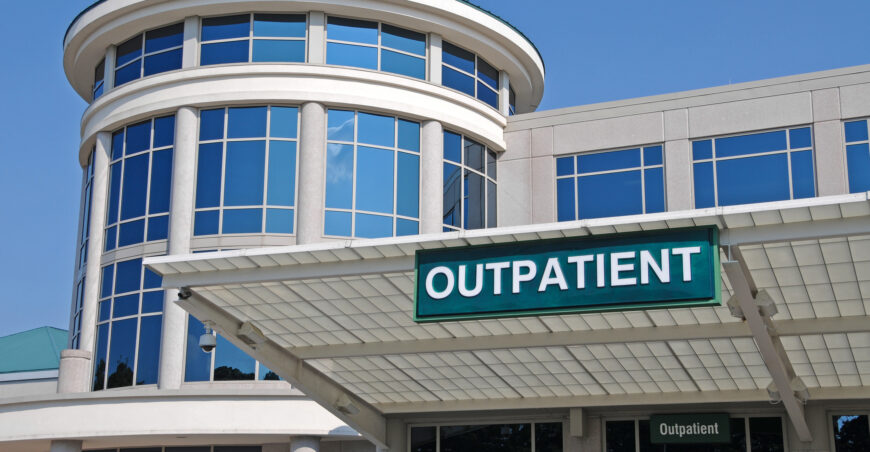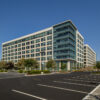Location is very valuable for healthcare real estate investments. Whether you’re looking to develop a hospital, medical office building, or outpatient clinic, where you choose to invest can make all the difference in your success. The right location can attract patients, ensure steady tenant demand, and ultimately maximize your return on investment. In this article, we’ll break down why location is so important in healthcare real estate and what factors to consider when deciding where to invest.
Proximity to Patients: Convenience is Key
One of the first things to consider is the distance between the healthcare facility and the people who need it. Healthcare facilities are all about accessibility, patients want to get the care they need without traveling too far. The closer a facility is to a population hub, the more likely it is to be used.
For instance, urban and suburban areas with rapidly growing populations are often excellent choices for new healthcare facilities. They tend to have an increasing demand for medical services, especially in underserved areas where there are not enough doctors, clinics, or hospitals to meet the needs of the community. The aging population in certain areas also makes for a smart target. Seniors typically need more frequent healthcare, making locations with a high percentage of older resident’s ideal for senior care or chronic care facilities.
Accessibility and Infrastructure: Easy to Get To, Easy to Use
No one wants to go to a healthcare facility that’s difficult to reach. For patients, doctors, and staff alike, easy access is essential. When choosing a location, consider factors such as proximity to major highways, public transportation options, and the availability of parking. If patients can get in and out without much hassle, the facility is far more likely to see a steady stream of traffic.
This is particularly important for outpatient clinics, urgent care centers, and other healthcare facilities that rely on high patient turnover. People seeking medical care, especially in non-emergency situations, are more likely to choose a place that’s convenient. Even the little things, like easy-to-find parking and well-marked entrances, can make a big difference in patient volume.
For larger facilities like hospitals, ease of access is even more crucial. Being near major roads or public transportation hubs ensures that patients can arrive quickly, and emergency vehicles have easy access. It also helps staff and medical personnel get to work more easily, which is key for staffing and operational efficiency.
Nearby Services and Synergy: Building a Healthcare Ecosystem
A healthcare facility doesn’t operate in a bubble. Being close to other complementary healthcare services can significantly boost its success. For example, a medical office building located near a large hospital, or a healthcare campus can benefit from the foot traffic and patient referrals from the main hospital. Patients prefer convenience, and they often like the idea of seeing their primary care doctor, specialist, and getting lab work done in one area or even within the same complex.
Competition and Market Saturation: Know Your Neighbors
Another factor to consider is the level of competition in the area. Before investing in healthcare property, it’s important to analyze the existing healthcare landscape. If there are already several well-established healthcare providers offering similar services, it could be more difficult to attract patients or tenants. In these cases, standing out from the competition by offering specialized services or better accessibility could make the difference, but the challenge is clear.
On the other hand, investing in areas where healthcare services are limited or in high demand can be a major advantage. Underserved markets offer opportunities for growth and can help secure a strong patient base from the outset.
Regulatory and Zoning Challenges: Plan Ahead
Location isn’t just about finding the right spot on the map, there are also legal and regulatory factors to consider. Zoning laws dictate what types of buildings can go where, and this is especially important in healthcare real estate. Some areas might be zoned for office space but not for medical use, while others could have restrictions on the size or type of healthcare facility that can be built
Demographic Trends: The Future Matters
It’s not enough to simply look at the current state of a location, you also need to consider its future potential. Areas experiencing economic growth, new housing developments, or increasing job opportunities are likely to see population increases, which means more demand for healthcare services. In regions where the population is aging, there will be more demand for healthcare services related to chronic conditions, senior care, and rehabilitation. Meanwhile, in areas with a younger population, services like pediatric care, women’s health, and mental health services might be more in demand.
Location Is Everything in Healthcare Real Estate
In the world of healthcare real estate, location isn’t just important – it’s everything! A well-chosen location can drive patient traffic, ensure tenant demand, and provide steady long-term returns on investment. From proximity to patient populations and transportation infrastructure to regulatory considerations and local competition, there are a multitude of factors to weigh when deciding where to invest. By taking the time to carefully analyze these location-specific factors, investors can position their healthcare properties for success in an ever-evolving market.
The right location is critical for the success of any healthcare facility, impacting patient access, operational efficiency, and long-term growth. If you’re considering expanding your medical practice, now is the perfect time to explore your options.
Looking to Expand?
We currently have three medical development projects in the Valley: a 12-acre medical campus in San Tan Valley near Banner Ironwood, another in Queen Creek, and a 10-acre off-market development near Mercy Gilbert Hospital. Contact us today to learn more about these exciting opportunities and how we can help you find the ideal location for your practice’s expansion..
















